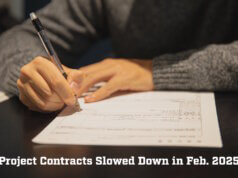

Managing Director
PNC Infratech Ltd
—Yogesh Kumar Jain, Managing Director, PNC Infratech Ltd
PNC Infratech has a big portfolio of highway projects on both EPC and BOT basis. Please give us a brief understanding of the comparative risk profile in the two modes of execution.
There are certain common risks and challenges for both the modes of implementation that include delays in land acquisition, environmental & forest clearances, utility shifting, tree cutting, approval of RoBs by railway authorities, and acute shortage of raw materials leading to inflation in cost of construction etc. However, in case of BOT projects, whether it is on toll or annuity model, any delay in implementation and commissioning of project would increase burden of interest on debt taken and in case of toll projects the potential challenge would be unpredictability of traffic growth and revenue levels during the concession period. I may mention that recently government has decided to award the projects only after taking possession of minimum 90 per cent of required land.
What is PNC’s order book position with respect to road projects on EPC basis?
Our company’s order book in terms of outstanding EPC contracts pending execution is valued at over Rs.3,000 crore as on June 30, 2015. In addition, our company was declared the lowest bidder (L1) in one airport runway project of MES for a quoted price of Rs.67.57 crore and our company-led JVs stood lowest bidders (L1) in two road projects of NHAI for an aggregate quoted price of Rs.1506.84 crore, with our share being Rs.931 crore. With these new projects our order book is expected to exceed Rs.4,000 crore soon.
Do you feel that the pace of awarding projects by NHAI has improved over the recent past?
Yes, the pace of launching and awarding new projects by NHAI has improved significantly in the recent past.
PNC has a significant portfolio of BOT projects. Tell us about your key projects on BOT basis.
We, through its various subsidiaries and associate/joint venture companies, have a portfolio of eight BOT/OMT projects, of which the following six projects are already in operation:
1.Kanpur – Kabrai section of NH-86, 100 per cent-owned BOT toll project;
2.Gwalior – Bhind section of NH-92, 100 per cent-owned BOT toll project;
3.Kanpur – Lucknow – Ayodhya section of NH-25, NH 56-A&B and NH-28, 100 per cent-owned OMT project;
4.Redevelopment & management of Narela Industrial Estate, New Delhi, 100 per cent-owned annuity project;
5.Ghaziabad – Aligarh section of NH-91, 35 per cent-owned BOT toll project; and
6.Jaora – Nayagaon section of Madhya Pradesh SH-31, 8.5 per cent-owned BOT toll project.
The remaining two projects viz. Bareilly-Almora section of Uttar Pradesh SH-47 (100 per cent-owned BOT toll project) and Raebareli-Jaunpur section of NH-231 (100 per cent-owned BOT annuity project) are in advanced stages of construction and are expected to be commissioned during the current financial year, FY16. I am happy to mention that we have infused the entire equity in all the projects and there is no further equity requirement in the existing BOT portfolio.
Do you feel that state governments have been successful enough in attracting private investment in road sector? How can private sector participation be improved?
Generally, traffic volumes on state highways are very much lower side than national highways. Although a number of projects have been conceived by different state governments on PPP format over the years, they have not been successful enough to attract private sector investment, particularly in case of projects on BOT-Toll model, where the entire revenue risk has to be taken by private players. The big hurdle in realization of these initiatives is financial viability and bankability of projects. Maximum permissible viability gap funding being offered for these projects notwithstanding, they still fall short of threshold viability requirement. The private sector participation can only be improved by adopting structuring of projects on BOT-Annuity or the recently-introduced Hybrid Annuity Model.
What is your view on formation of joint ventures and consortia while bidding for national highway projects? Tell us about your key partners. Does PNC have such partnerships with multinational players?
As per my view, given the possibility, sole bidding would always be competitive and also more efficient for project delivery. However, in case of larger and complex projects, formation of joint venture may be done on need basis. With our present techno-financial credentials, our company can bid for an EPC project up to an estimated value of over Rs.3,000 crore and a BOT project up to a value of over Rs.2,500 crore.
We don’t have any partners at domestic level. However, we have entered into a MoU with POSCO Engineering and Construction India Private Ltd, for collaborating and cooperating towards exploring, pursuing and developing new business opportunities and executing projects jointly in the areas of: (a) industrial, urban & core infrastructure in India & neighboring countries, with a special focus on railway projects (including rail freight corridors, metro rail, high speed rail network, light rail transport, monorail & personal rapid transport systems); (b) industrial infrastructure projects, including new industrial corridors, re-development of existing industrial estates, industrial townships & ancillary facilities like treatment plants etc; (c) urban infrastructure projects, including development of smart cities and integrated townships among other sectors.
Highway contractors face a number of challenges during project execution. Tell us about key challenges that you typically encounter.
The major challenges faced roads sector in general included setting-out ambitious timelines for project implementation overlooking the ground realities by the project sponsors, delays in land acquisition, environmental & forest clearances, tree cutting, approvals for RoB/RuBs, shifting of utilities, decisions & approvals etc apart from in-adequate planning before award of projects for execution. These challenges are common for any EPC contractors.
However, our company always plans the resource deployment and project implementation schedules in such a way that effects of the delays are minimal. We believe in expediting the implementation and timely execution of our projects on both BOT and EPC formats amid challenging situations, to mitigate the financial implications due to inflation in input costs including materials, transportation and labour. Another significant competency of our company lies in having end-to-end construction capabilities in-house, right from the mining till final product stage that includes quarrying of stones (boulders for aggregates), state-of-the-art stone crushers, transportation vehicles, concrete & bituminous plants, paver finishers, rollers and other equipment including road marking equipment. These distinct abilities give our company a great control over execution, quality, time and cost of our projects even in challenging situations and times.
The government recently launched a hybrid annuity model for national highway projects, as an alternative to pure EPC and DBFOT projects. What is your view on this?
This an innovative annuity model that government has introduced recently, where financing risk is being shared by government and concessionaire jointly, entire construction and O&M risk to be taken by concessionaire and entire revenue (traffic) risk by government. Given the financial capacity constraints being faced many road developers and also lack of availability of suitable debt products aligned with revenue stream profile of highway projects, this model is expected revive the private sector participation in the road sector. NHAI already came out with three packages of Delhi-Meerut Expressway project for bidding on the Hybrid Annuity Model. We are actively evaluating the frame-work mechanism of this model and provisions of concession agreement.
How do the years ahead look to you in terms of opportunities in the roads and highway segment?
As government contemplates an investment of about Rs.5 lakh crore in the next five years in roads & highways sector, we see bright opportunities in the road construction sector in the country in the foreseeable future. In the short term, we are also in the process considering bidding of more than about 25 road projects with more than Rs.15,000 crore estimated value before the quarter ending September 2015.
We have proven track record of completing projects on time and our core competency in EPC of road projects is time tested and firmly established We also undertake construction activities of our entire fund based projects (BOT-Toll and BOT-Annuity) on our own, which makes us the least dependent on third parties in implementation and delivery of projects.
Given the capabilities and competencies in terms of investment, development, construction and O&M of road projects, we could see a very promising business outlook for our company.











